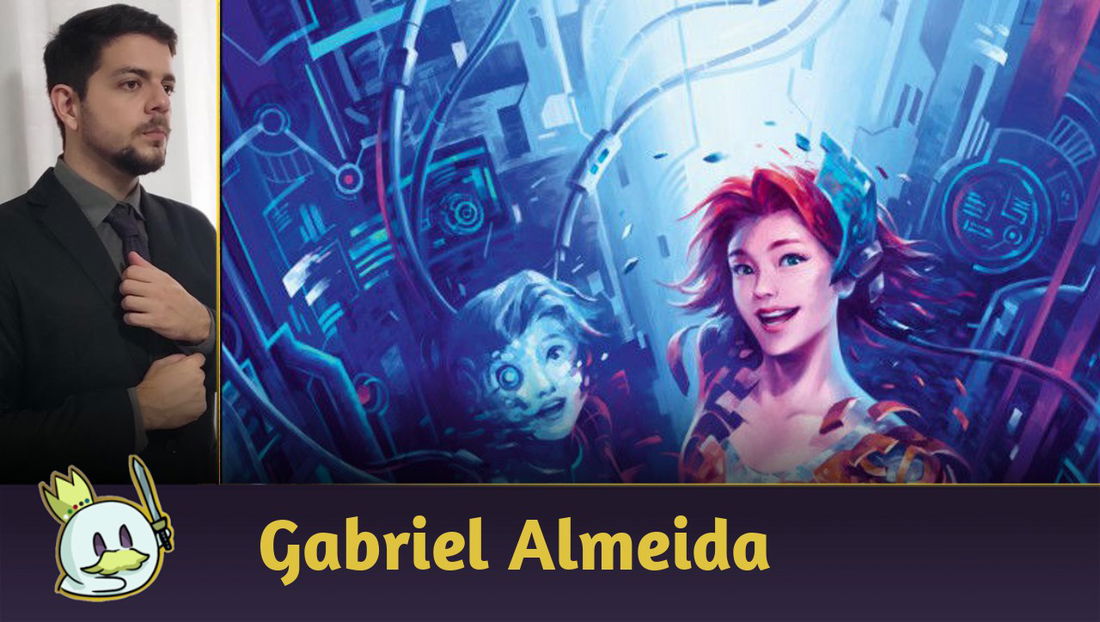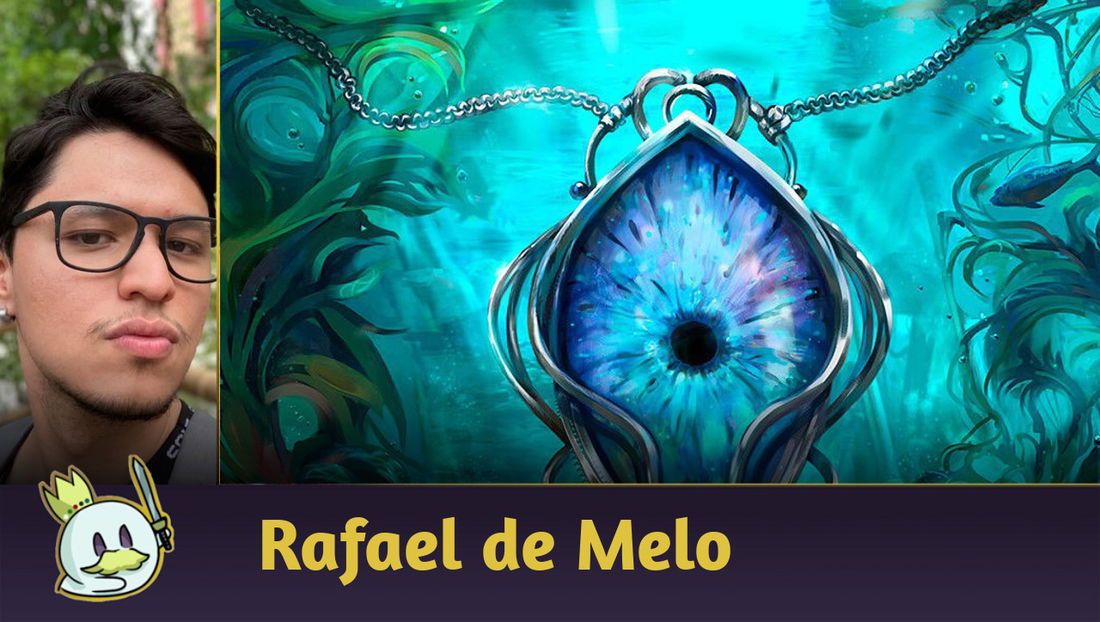About Kassai, Cintari Sellsword
Kassai, Cintari Sellsword is a Warrior hero that focuses on using two Cintari Saber and many attack reactions to force her opponent into suboptimal plays.

She has two abilities: her second sword attack, each turn, costs one resource less. Then, if you attack two or more times with weapons that turn, you'll create Copper tokens for each weapon attack that hit.
Creating tokens isn't that important in Commoner. It used to be incredibly strong in Blitz, as you needed Coppers to use Blood on Her Hands, but, as this is a majestic card, you can't use it in Commoner. That's what makes Coppers a bit useless.
Nonetheless, the fact you can use her second sword attack for free means you'll create a lot of value throughout the match with very few cards in hand. It is almost as efficient as the format's MVP, Ira, Crimson Haze.

Your game plan is basically giving go again to your first attack so you can use her second sword attack. Then, you just need to use attack reactions to go through your opponent's defenses.
Recently, we got a new Kassai, but her ability is a bit more complicated to activate, so she is a bit "inferior" when compared to the original.
Decklist and Game Plan
As we mentioned before, Kassai's game plan is centered around giving go again to your first attack, to then use her second sword attack for free, but what matters is how'll you do that. Before we get to this part, you need to learn a few things about Warrior mechanics.
First, your Cintari Sabers have a "once per turn action" text. This means each saber can only attack once per turn, so it doesn't make sense to give go again to the second sword attack.
Most of your damage comes from attack reactions, so, usually, your opponent will have to block without knowing how much total damage they're taking.
Of course, defense reactions exist and many decks use at least Sink Below, but your opponent won't have them all the time. Most decks also use multiple actions, so Cintari Saber's effect, which gives it 1 attack power when it is defended by one or more action cards, makes a lot of difference when it's time to calculate your total damage.
This is a midrange deck: every turn, you need to count and plan ahead which cards you'll need to get as much value possible out of your plays. Defensive decks typically get more value when they use most of their hand defensively, whereas aggro decks will hardly defend at all.
How you'll approach each game will depend on your hand and what your opponent is doing.
However, before we tell you a few extra details, you must know the deck itself.
As you can see, the deck has 18 attack reactions, which is half of your damage. Considering you'll use Hit and Run (1) to give go again to something most of the time instead of buffing your sword's attack, attack reactions are more than half your damage.
This is important because, when your opponent realizes they can die from just one other attack reaction, they'll start blocking with more cards than they should.
That being said, we have many actions as well.
Driving Blade (1) and the aforementioned Hit and Run are mostly useful to give go again to your sword, but keep in mind Driving Blade (3) doesn't create much value early on. Ideally, you'll want to pitch it. All versions of Hit and Run, however, are great for us, as we can always use two of them on the same turn without further issues. The first one, before your first attack, gives you go again, and the second one, after your first attack, buffs your second sword's attack power.
Keep in mind that playing actions after a sword attack breaks the combat chain, so equipment with Battleworm or Temper will be able to block again. That's rare in Commoner, but not impossible.
In addition, you'll mostly pitch Second Swing (2), but it is usually a relevant threat in your second cycle.

Sharpen Steel (1) and Outland Skirmish (1) are 0-cost cards that buff your sword's attack power by 3. They'll give you extremely powerful turns, even if you only have them in your hand.
The last action in this deck is Goblet of Bloodrun Wine (3), which creates a lot of value long-term. Ideally, the best moment to use it is on turn 0, as you'll create an Agility and Vigor token, put one card in your arsenal, then pass.
When you start your turn and destroy your tokens to activate their effects, you'll have enough resources to set up your first attack and give it go again, thanks to your Agility token. This way, you'll be able to defend yourself with your entire hand on the previous turn and still threaten another 4 damage afterward.
Early game, you'll hardly have access to this as your best play. But we'll discuss "value" later on.

This deck plays all versions of Blade Runner (1) because it's the best card in the deck. With just one resource, as an attack reaction, you can give go again to your attack and buff the damage of your next attack.
If you haven't noticed yet, the other sources of go again in this deck are either actions or are visible to your opponent (Refraction Bolters). A surprise go again (or just the possibility of it) completely changes the game state.
Blade Runner is definitely the card that will make your opponent question themselves and how they should block. For instance, if you set up a second attack, it's no use to "overblock" the attack to escape the reactions. If you play Blade Runner (1) from your hand, you can even save your reactions for your next attack.

The rest of the deck is just the best attack reactions valid in this format. They usually cost 0 and give you 3 damage or cost 1 and give you 3 damage and another extra bonus, like Puncture (1)'s Piercing 1, or 1 extra damage for the next attack you set up with Out for Blood (1).
It's important to pay attention to Out for Blood (1): its Reprise buffs your next attack, that is, it is only relevant when you use it in your first attack, and then give its bonus to your second attack. However, don't hesitate to use it just because you're scared you won't activate its Reprise or if you can't use a second attack. Many times, that 3 damage is important to keep pressuring your opponent and gaining time.
In the Swing (1) is also essential to make your opponent doubt themselves. Yes, you can only use it in your second attack. It is probably the worst card in the deck, and is terrible in your second cycle, when many times you don't have many ways to get go again. That being said, it still defends 3 and costs 0. In the game's first cycle, when you're usually attacking with two swords all the time, it is one of the best cards. In your second cycle, it turns into a good block.
This deck also has Sink Below (1) and Fate Foreseen (1), as they're the best defensive cards in the game.

No Heavy Hitters
If you have been playing FaB for a while, you must have noticed there is only one card from Heavy Hitters, a set focused on Warriors, Guardians, and Brutes.
That is because most common cards in this set are a bit too "fair". If they are quite offensive, then they can't be defensive at all, and, if they're very defensive, they can't be offensive at all.
Particularly, I believe Commoner is extremely aggressive, and, Kassai can't compete against more aggressive decks if it's just a matter of speed. For that reason, cards that defend 2 are not that efficient.
If you're against a Dash or a ninja, your entire hand will hardly deal more damage than their entire hand, so you'll want to defend yourself. And having a card that defends for 2 in your hand might just be your downfall.
Cards like Edge Ahead (1) seem to make sense in this deck, but they're actions and cost 1. Furthermore, I don't see what you would swap it for, as all the actions in this deck either give you go again on the spot, or cost 0, or both, sometimes.

Understanding Value and Other Tips
Kassai is midrange in essence, so, every turn, you need to think, "how do I get more value out of my cards?". Therefore, you need to understand that, for each 1 attack power or 1 defense a card in your hand gave you, you got 1 value in return.
When it's time to block (or not), you must ask yourself how much value the card you'll use to block can create. Often, you won't mind using two cards to defend yourself. As most of your cards have 3 attack power and 3 defense, you'll get a similar amount of value whenever you block or attack. But it's important to count how much value that card gives you.
If I have a Puncture (1) and a Second Swing (3) in hand, and I use Second Swing as a resource, I'll be turning a 5-power attack into a 7-power attack. That is, if you also activate your boot's effect to get go again.

Of course, that's not that easy to see. It's critical to keep in mind what your opponent will do, as, sometimes, this "3 life" is more important than dealing damage. Sometimes, it's the other way around, and you need to know it's time to put pressure on your opponent. It is difficult overall, as you need to be aware of the game state and who you're facing.
Keep in mind that you also have Blossom of Spring for turns where you have to put more pressure on your opponent but don't have many cards in hand.
Your gloves, boots, and helmet all have Battleworn. Try to make the most out of it, as it's a common mistake to use the equipment's ability to defend yourself before the equipment itself.
You'll hardly use Hood of the Red Sand's ability, as there are only 4 yellow cards in the deck. However, if you do get an opportunity to use it, keep in mind it's only worth it to use it in your second attack if you need to set up your arsenal. You'll draw cards after the combat resolves.
All the cards in your sideboard are great against Wizards. You'll remove 2 Fate Foreseen (1) and 1 Sink Below (1) in that case. You can also not do that if you're sure your opponent is an Iyslander with many attack actions, but the general idea is to remove red cards. Don't forget to use your Nullrunes.

Metagame
Kassai doesn't play too different according to the matchup. You'll often block with two cards and attack with two cards. That being said, there are a few matchups you should keep an eye on.
First, Dash. She'll always deal a lot more damage than you, and a weak turn for her is one of your standard turns. However, for each attack reaction she uses, she loses two cards because of the boost mechanic. So, it's an easy match; just play defensively and wait until your opponent is fatigued.
It's best to start first, set up a few attacks (which your opponent will defend), and then, for the rest of the match, defend yourself as much as you can, and don't worry about putting pressure.

The match may get complicated if your opponent knows how to play around a fatigue deck and is prepared to take on a different approach with Plasma Barrel Shot. If you realize that's the case, try to put pressure on your opponent on one of their "lighter" turns, as they need to swap between "light" and "heavy" turns to win against a fatigue strategy.
Try to use your defense reactions in turns you feel an Overblast (1) is coming, and save your armor to defend yourself against Payload (1).

Chane's ability also lets you fatigue him. It can, potentially, deal more damage than Dash, but he tends to "brick" more easily. Try to use the turns where they draw too many attack actions or too many non-attack actions to impose a fast clock. You'll know when that happens because they'll play shorter turns. Use at least one Nullrune as your equipment.
The rest of the matches are quite standard for Kassai, and you'll play as usual. I'll just highlight Iyslander, as you'll try to play the game and your game plan, and she'll try to stop everything you're doing, but there's not much any of you can do, except use your sideboard well. It's well-prepared to face her.

Final Words
I hope you enjoyed reading this article and learned something about this deck with this guide. Kassai is quite powerful, but she's not that popular because of Iyslander, which is her worst match and is quite popular herself. That being said, if your local metagame doesn't have many Iyslanders, you can get excellent results with our favorite Warrior.
Do you like this deck? What would you change in it? Tell us your thoughts in our comment section below!
Thank you for reading, and see you next time!















— Comentários 0
, Reações 1
Seja o primeiro a comentar